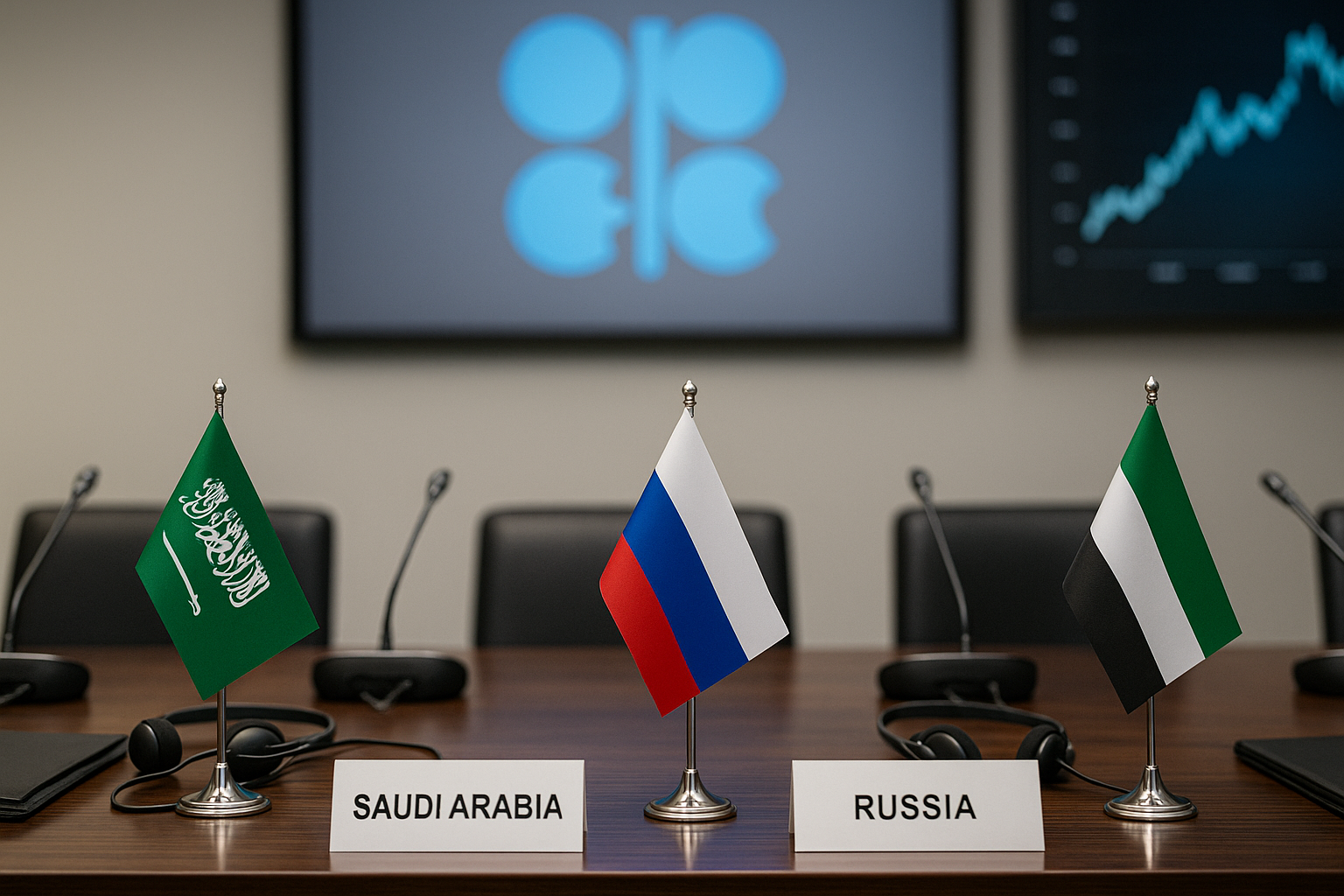OPEC+ Compliance Push Puts Oil Output Limits Back in Focus
By Tredu.com • 10/1/2025
Tredu

JMMC reaffirms discipline as markets weigh next steps
What OPEC+ said
The OPEC+ Joint Ministerial Monitoring Committee (JMMC) met online on Oct. 1 and stressed the need for full compliance with existing oil output limits, reiterating that strict implementation remains central to market stability. The session began around 12:30 GMT and, as usual, carried no mandate to set policy, serving instead to track adherence and recommend actions if needed.
Policy context: targets, underperformance and talk of increases
The compliance push lands amid competing signals. In late September, OPEC+ production was running below target as capacity constraints blunted planned increases, leaving the group roughly ~0.5 million bpd short of its goal. At the same time, sources have floated the prospect that a subset of eight members could consider larger November hikes, potentially 274,000–411,000 bpd or more, depending on demand and inventories. The JMMC’s emphasis on OPEC+ compliance suggests that any near-term supply adjustments will be weighed against members’ ability to actually deliver barrels and to make quota compensation cuts where they previously overproduced.
Market reaction: Brent price steadies as traders parse signals
Crude benchmarks stabilized after a two-day slide, with Brent edging higher as traders balanced chatter about potential output hikes against a reaffirmation of oil output limits discipline and mixed product stock data. The tone was one of consolidation rather than trend change, reflecting uncertainty over how quickly additional, policy-aligned barrels could appear given recent under-delivery versus targets.
Why “full compliance” matters for price formation
- Signal vs. supply: Re-stating OPEC+ compliance signals a floor under the producer pact, even if the JMMC meeting itself cannot reset policy. The reminder tends to support term structure and temper volatility by anchoring expectations for quota compensation cuts among laggards.
- Capacity asymmetry: Spare capacity remains concentrated, principally in the Gulf, while several producers face technical or fiscal constraints. That imbalance means that headlines about future increases often overstate near-term supply reality.
- Demand fog: With global manufacturing uneven and U.S. macro data flow at risk of delays, traders are cautious about extrapolating demand, amplifying the importance of credible compliance headlines over speculative quota arithmetic.
Read-through for equities, credit and freight
- Producers & services: For listed E&Ps, a steady-discipline signal keeps cash-flow visibility acceptable even if prices remain range-bound. Services names tied to brownfield optimization could benefit if quota compensation cuts encourage maintenance and debottlenecking rather than aggressive greenfield spending. (Analytical view informed by the day’s OPEC+/price context.)
- Refining & products: If crude holds steady while middle distillates stay tight, refiners with Atlantic Basin exposure retain a constructive margin setup into winter, though the balance is sensitive to any realized output increases. (Analytical view using the same sources.)
- Tanker markets: Incremental OPEC+ compliance can nudge voyage patterns; a slower-than-signaled supply rise keeps clean and dirty rates more dependent on regional arbitrage than on a wholesale lift in long-haul volumes. (Analytical view.)
What to watch next
- Next OPEC+ policy meeting: Whether ministers hold output policy steady or formalize a modest November increase, and how they square that with full compliance for members still behind on compensation cuts.
- Physical indicators: Dubai spreads, North Sea diffs and ARA product cracks for early signs that talk of higher supply is translating into actual flow data rather than paper repositioning.
- Macro overlay: U.S. data cadence and China’s refinery run rates will shape demand expectations more than headlines alone; persistent data uncertainty tends to favor a discipline-first stance.
Risks and counterpoints
- Compliance fatigue: Fiscal pressures in several producers raise the risk of slippage; if oil output limits are honored unevenly, credibility erodes and volatility returns.
- Capacity surprises: Faster-than-expected repairs or project ramps could make output increases more deliverable than the market assumes, softening prices if demand underwhelms.
- Demand shock: A sharper macro slowdown would overpower OPEC+ compliance signaling and refocus attention on inventory builds.

How to Trade Like a Pro
Unlock the secrets of professional trading with our comprehensive guide. Discover proven strategies, risk management techniques, and market insights that will help you navigate the financial markets confidently and successfully.


